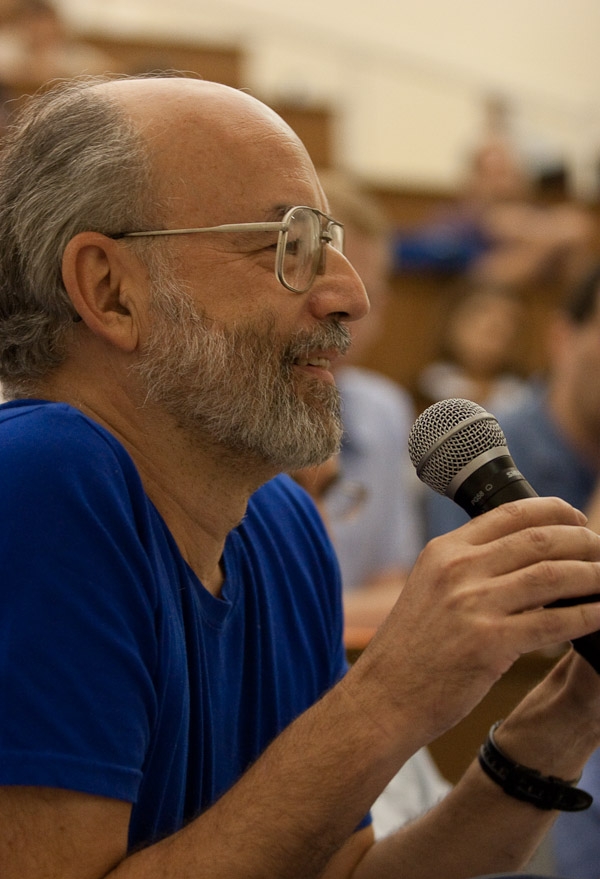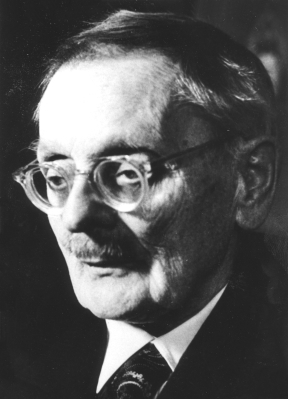|
Proof Complexity
In logic and theoretical computer science, and specifically proof theory and computational complexity theory, proof complexity is the field aiming to understand and analyse the computational resources that are required to prove or refute statements. Research in proof complexity is predominantly concerned with proving proof-length lower and upper bounds in various propositional proof systems. For example, among the major challenges of proof complexity is showing that the Frege system, the usual propositional calculus, does not admit polynomial-size proofs of all tautologies. Here the size of the proof is simply the number of symbols in it, and a proof is said to be of polynomial size if it is polynomial in the size of the tautology it proves. Systematic study of proof complexity began with the work of Stephen Cook and Robert Reckhow (1979) who provided the basic definition of a propositional proof system from the perspective of computational complexity. Specifically Cook and Reckho ... [...More Info...] [...Related Items...] OR: [Wikipedia] [Google] [Baidu] |
Logic
Logic is the study of correct reasoning. It includes both formal and informal logic. Formal logic is the science of deductively valid inferences or of logical truths. It is a formal science investigating how conclusions follow from premises in a topic-neutral way. When used as a countable noun, the term "a logic" refers to a logical formal system that articulates a proof system. Formal logic contrasts with informal logic, which is associated with informal fallacies, critical thinking, and argumentation theory. While there is no general agreement on how formal and informal logic are to be distinguished, one prominent approach associates their difference with whether the studied arguments are expressed in formal or informal languages. Logic plays a central role in multiple fields, such as philosophy, mathematics, computer science, and linguistics. Logic studies arguments, which consist of a set of premises together with a conclusion. Premises and conclusions are usual ... [...More Info...] [...Related Items...] OR: [Wikipedia] [Google] [Baidu] |
Bounded Arithmetic
Bounded arithmetic is a collective name for a family of weak subtheories of Peano arithmetic. Such theories are typically obtained by requiring that quantifiers be bounded in the induction axiom or equivalent postulates (a bounded quantifier is of the form ∀''x'' ≤ ''t'' or ∃''x'' ≤ ''t'', where ''t'' is a term not containing ''x''). The main purpose is to characterize one or another class of computational complexity in the sense that a function is provably total if and only if it belongs to a given complexity class. Further, theories of bounded arithmetic present uniform counterparts to standard propositional proof systems such as Frege system and are, in particular, useful for constructing polynomial-size proofs in these systems. The characterization of standard complexity classes and correspondence to propositional proof systems allows to interpret theories of bounded arithmetic as formal systems capturing various levels of feasible reasoning (see ... [...More Info...] [...Related Items...] OR: [Wikipedia] [Google] [Baidu] |
Computational Complexity (journal)
In computer science, the computational complexity or simply complexity of an algorithm is the amount of resources required to run it. Particular focus is given to computation time (generally measured by the number of needed elementary operations) and memory storage requirements. The complexity of a problem is the complexity of the best algorithms that allow solving the problem. The study of the complexity of explicitly given algorithms is called analysis of algorithms, while the study of the complexity of problems is called computational complexity theory. Both areas are highly related, as the complexity of an algorithm is always an upper bound on the complexity of the problem solved by this algorithm. Moreover, for designing efficient algorithms, it is often fundamental to compare the complexity of a specific algorithm to the complexity of the problem to be solved. Also, in most cases, the only thing that is known about the complexity of a problem is that it is lower than the com ... [...More Info...] [...Related Items...] OR: [Wikipedia] [Google] [Baidu] |
Key Exchange
Key exchange (also key establishment) is a method in cryptography by which cryptographic keys are exchanged between two parties, allowing use of a cryptographic algorithm. If the sender and receiver wish to exchange encrypted messages, each must be equipped to encrypt messages to be sent and decrypt messages received. The nature of the equipping they require depends on the encryption technique they might use. If they use a code, both will require a copy of the same codebook. If they use a cipher, they will need appropriate keys. If the cipher is a symmetric key cipher, both will need a copy of the same key. If it is an asymmetric key cipher with the public/private key property, both will need the other's public key. Channel of exchange Key exchange is done either in-band or out-of-band. The key exchange problem The key exchange problem describes ways to exchange whatever keys or other information are needed for establishing a secure communication channel so that no one e ... [...More Info...] [...Related Items...] OR: [Wikipedia] [Google] [Baidu] |
Information And Computation
''Information and Computation'' is a closed-access computer science journal published by Elsevier (formerly Academic Press). The journal was founded in 1957 under its former name ''Information and Control'' and given its current title in 1987. , the current editor-in-chief is David Peleg. The journal publishes 12 issues a year. History ''Information and Computation'' was founded as ''Information and Control'' in 1957 at the initiative of Leon Brillouin and under the editorship of Leon Brillouin, Colin Cherry and Peter Elias. Murray Eden joined as editor in 1962 and became sole editor-in-chief in 1967. He was succeeded by Albert R. Meyer in 1981, under whose editorship the journal was rebranded ''Information and Computation'' in 1987 in response to the shifted focus of the journal towards theory of computation and away from control theory. In 2020, Albert Mayer was succeeded by David Peleg as editor-in-chief of the journal. Indexing All articles from the ''Information and ... [...More Info...] [...Related Items...] OR: [Wikipedia] [Google] [Baidu] |
P/poly
In computational complexity theory, P/poly is a complexity class representing problems that can be solved by small circuits. More precisely, it is the set of formal languages that have polynomial-size circuit families. It can also be defined equivalently in terms of Turing machines with advice, extra information supplied to the Turing machine along with its input, that may depend on the input length but not on the input itself. In this formulation, P/poly is the class of decision problems that can be solved by a polynomial-time Turing machine with advice strings of length polynomial in the input size. These two different definitions make P/poly central to circuit complexity and non-uniform complexity. For example, the popular Miller–Rabin primality test can be formulated as a P/poly algorithm: the "advice" is a list of candidate values to test. It is possible to precompute a list of O(n) values such that every composite n-bit number will be certain to have a witness a in the lis ... [...More Info...] [...Related Items...] OR: [Wikipedia] [Google] [Baidu] |
RSA Encryption
RSA (Rivest–Shamir–Adleman) is a public-key cryptosystem that is widely used for secure data transmission. It is also one of the oldest. The acronym "RSA" comes from the surnames of Ron Rivest, Adi Shamir and Leonard Adleman, who publicly described the algorithm in 1977. An equivalent system was developed secretly in 1973 at Government Communications Headquarters (GCHQ) (the British signals intelligence agency) by the English mathematician Clifford Cocks. That system was declassified in 1997. In a public-key cryptosystem, the encryption key is public and distinct from the decryption key, which is kept secret (private). An RSA user creates and publishes a public key based on two large prime numbers, along with an auxiliary value. The prime numbers are kept secret. Messages can be encrypted by anyone, via the public key, but can only be decoded by someone who knows the prime numbers. The security of RSA relies on the practical difficulty of factoring the product ... [...More Info...] [...Related Items...] OR: [Wikipedia] [Google] [Baidu] |
SIAM Journal On Computing
The ''SIAM Journal on Computing'' is a scientific journal focusing on the mathematical and formal aspects of computer science. It is published by the Society for Industrial and Applied Mathematics (SIAM). Although its official ISO abbreviation is ''SIAM J. Comput.'', its publisher and contributors frequently use the shorter abbreviation ''SICOMP''. SICOMP typically hosts the special issues of the IEEE Annual Symposium on Foundations of Computer Science (FOCS) and the Annual ACM Symposium on Theory of Computing (STOC), where about 15% of papers published in FOCS and STOC each year are invited to these special issues. For example, Volume 48 contains 11 out of 85 papers published in FOCS 2016. References * External linksSIAM Journal on Computing on |
NE (complexity)
In computational complexity theory, the complexity class NE is the set of decision problems that can be solved by a non-deterministic Turing machine In theoretical computer science, a nondeterministic Turing machine (NTM) is a theoretical model of computation whose governing rules specify more than one possible action when in some given situations. That is, an NTM's next state is ''not'' comp ... in time O(''k''n) for some ''k''. NE, unlike the similar class NEXPTIME, is not closed under polynomial-time many-one reductions. See also * E (complexity). References {{DEFAULTSORT:Ne (Complexity) Complexity classes ... [...More Info...] [...Related Items...] OR: [Wikipedia] [Google] [Baidu] |
E (complexity)
In computational complexity theory, the complexity class E is the set of decision problems that can be solved by a deterministic Turing machine in time 2 O(''n'') and is therefore equal to the complexity class DTIME(2O(''n'')). E, unlike the similar class EXPTIME In computational complexity theory, the complexity class EXPTIME (sometimes called EXP or DEXPTIME) is the set of all decision problems that are solvable by a deterministic Turing machine in exponential time, i.e., in O(2''p''(''n'')) time, ..., is not closed under polynomial-time many-one reductions. References *. *. *. *. *. External links * {{comp-sci-theory-stub Complexity classes ... [...More Info...] [...Related Items...] OR: [Wikipedia] [Google] [Baidu] |
Journal Of Symbolic Logic
The '' Journal of Symbolic Logic'' is a peer-reviewed mathematics journal published quarterly by Association for Symbolic Logic. It was established in 1936 and covers mathematical logic. The journal is indexed by ''Mathematical Reviews'', Zentralblatt MATH, and Scopus. Its 2009 MCQ was 0.28, and its 2009 impact factor The impact factor (IF) or journal impact factor (JIF) of an academic journal is a scientometric index calculated by Clarivate that reflects the yearly mean number of citations of articles published in the last two years in a given journal, as ... was 0.631. External links * Mathematics journals Publications established in 1936 Multilingual journals Quarterly journals Association for Symbolic Logic academic journals Logic journals Cambridge University Press academic journals {{math-journal-stub ... [...More Info...] [...Related Items...] OR: [Wikipedia] [Google] [Baidu] |
Zermelo Fraenkel Set Theory
Ernst Friedrich Ferdinand Zermelo (, ; 27 July 187121 May 1953) was a German logician and mathematician, whose work has major implications for the foundations of mathematics. He is known for his role in developing Zermelo–Fraenkel axiomatic set theory and his proof of the well-ordering theorem. Furthermore, his 1929 work on ranking chess players is the first description of a model for pairwise comparison that continues to have a profound impact on various applied fields utilizing this method. Life Ernst Zermelo graduated from Berlin's Luisenstädtisches Gymnasium (now ) in 1889. He then studied mathematics, physics and philosophy at the University of Berlin, the University of Halle, and the University of Freiburg. He finished his doctorate in 1894 at the University of Berlin, awarded for a dissertation on the calculus of variations (''Untersuchungen zur Variationsrechnung''). Zermelo remained at the University of Berlin, where he was appointed assistant to Planck, under whos ... [...More Info...] [...Related Items...] OR: [Wikipedia] [Google] [Baidu] |


